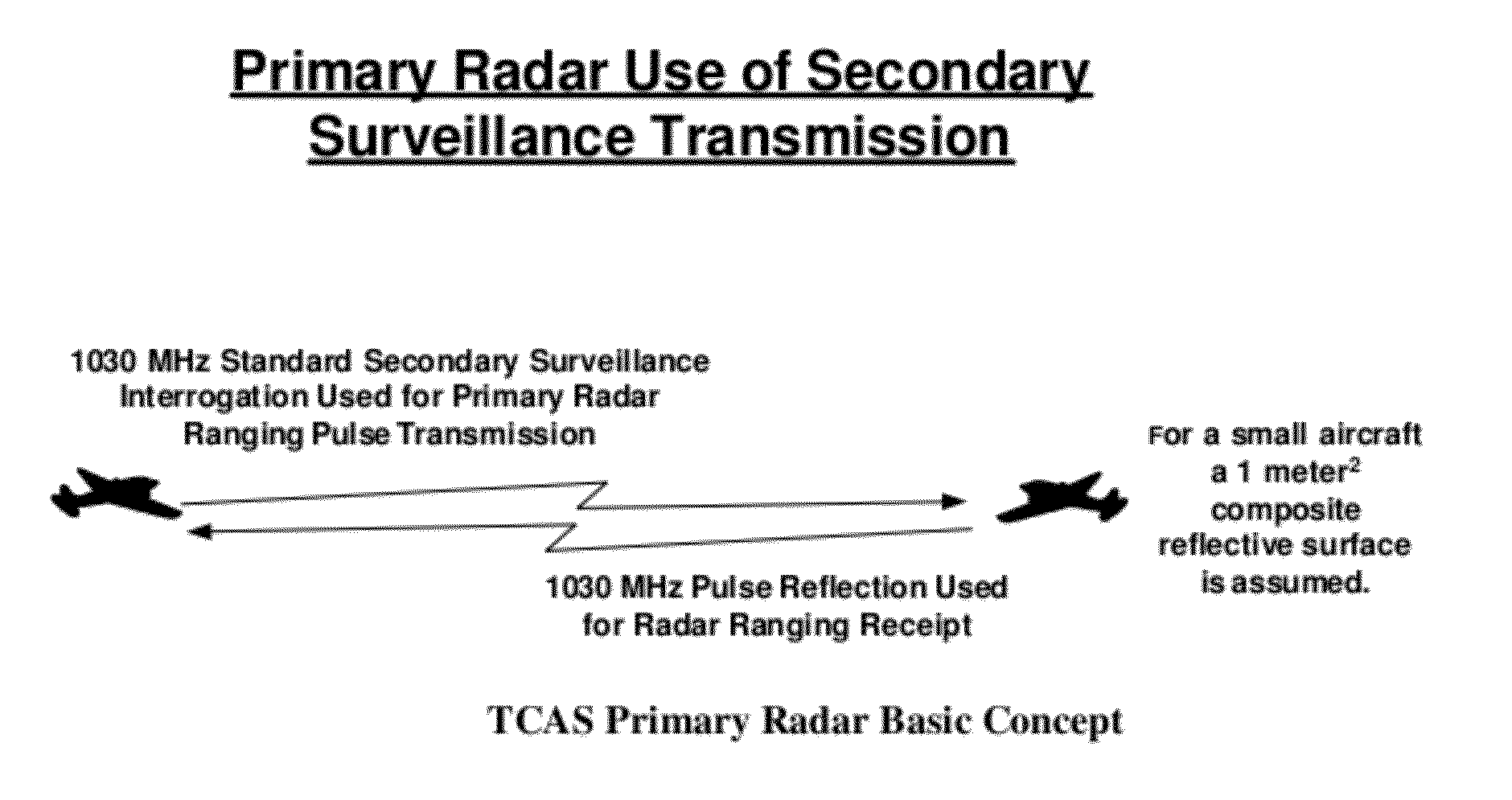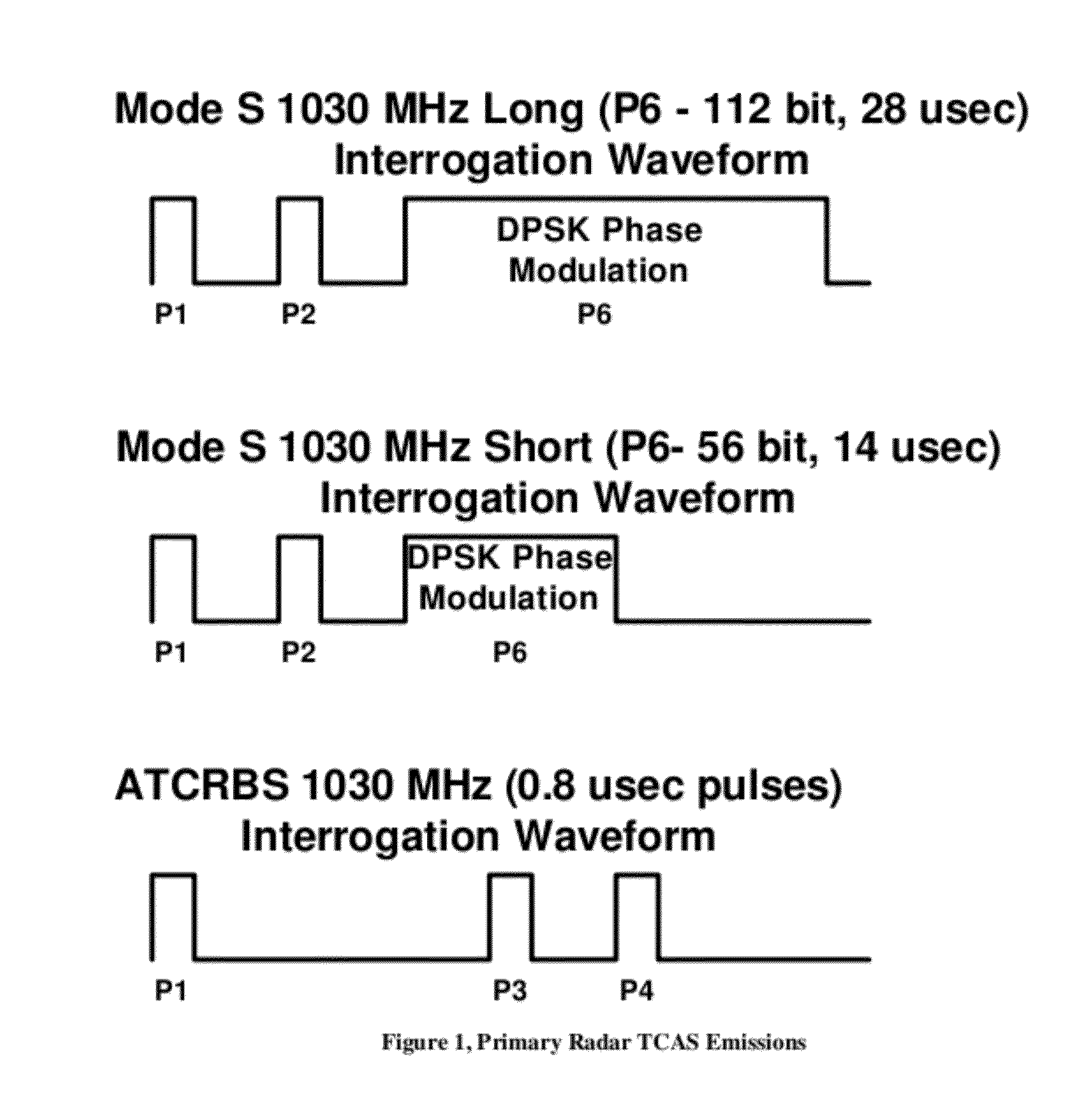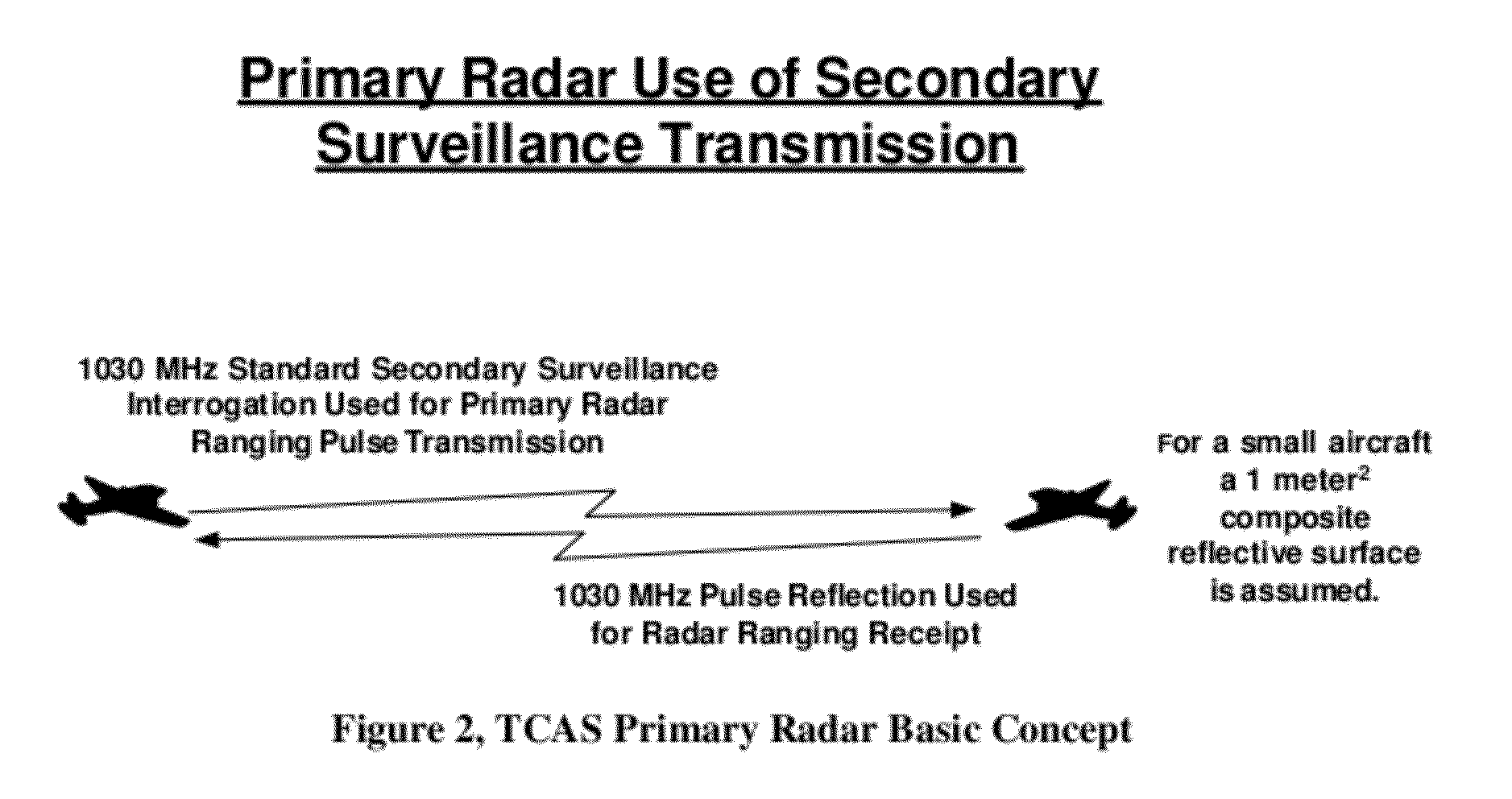Systems and methods of providing a tcas primary radar
a primary radar and radar system technology, applied in the field of radar systems, can solve the problems of uas aircraft being significantly heavier, having transponders, and not being able to respond to tcas interrogations
- Summary
- Abstract
- Description
- Claims
- Application Information
AI Technical Summary
Benefits of technology
Problems solved by technology
Method used
Image
Examples
Embodiment Construction
[0024]Reference will now be made in detail to the present exemplary embodiments of the invention, examples of which are illustrated in the accompanying drawings.
[0025]Embodiments of the present invention primarily disclose systems and methods for using a TCAS RF platform to provide a primary radar function using the already existing industry standard waveforms and modulation required for TCAS secondary surveillance. Such embodiments allow for existing industry standard waveforms and modulations of TCAS, as described in RTCA DO-185B, to be used to provide a primary tracking radar function without the need for any new non-TCAS-industry standard modulation.
[0026]Embodiments of the present invention may use the Mode S and ATCRBS interrogation waveforms already being generated and transmitted on 1030 MHz by TCAS for secondary surveillance radar as the emissions to be used for the primary surveillance radar function. Exemplary Mode S interrogation emissions are shown in FIG. 1 and already...
PUM
 Login to View More
Login to View More Abstract
Description
Claims
Application Information
 Login to View More
Login to View More - R&D
- Intellectual Property
- Life Sciences
- Materials
- Tech Scout
- Unparalleled Data Quality
- Higher Quality Content
- 60% Fewer Hallucinations
Browse by: Latest US Patents, China's latest patents, Technical Efficacy Thesaurus, Application Domain, Technology Topic, Popular Technical Reports.
© 2025 PatSnap. All rights reserved.Legal|Privacy policy|Modern Slavery Act Transparency Statement|Sitemap|About US| Contact US: help@patsnap.com



